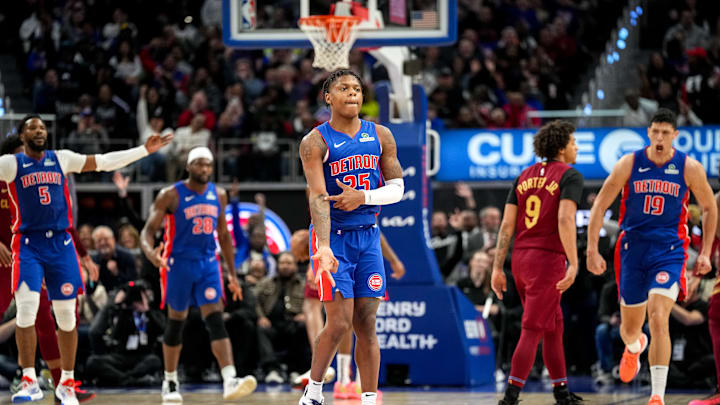Going into next season, one of the biggest questions on the Detroit Pistons roster is backup point guard. Based on the moves so far in the offseason, most fans are expecting a committee approach to this role, with playmaking on the second unit coming from guys like Caris LeVert and Jaden Ivey. But the most ideal option would be for Marcus Sasser to grow into the backup point guard role that he was seemingly drafted for in the first place.
Can Marcus Sasser evolve into a point guard for the Detroit Pistons?
Sasser is clearly a very talented basketball player - watch his highlights from last year and you will see an incredibly smooth handle and tough shot-making ability, especially on pull-up 3s. However, his fit on the Pistons has not been ideal due to his lack of playmaking. Sasser averaged 6.6 points per game and 2.3 assists per game last season in 14.2 minutes.
Most of Sasser’s buckets come in isolation or a pick-and-roll. Either way, he primarily scores after extensive dribbling in a way that doesn’t necessarily get the whole team involved. He was actually one of the best pull-up shooters in terms of efficiency last year, but that’s not the most valuable role for him to play on the Pistons. Instead, the Pistons would prefer to see him get other players involved more, especially by way of getting more assists. Consider Tyus Jones, a quintessential backup point guard, who averaged 5.3 assists per game in about 27 minutes of action.
Sasser’s shooting ability is nothing to scoff at. Last season, after the All-Star break, he shot 42 percent from three on three attempts per game in just 14 minutes. Shooting is always a plus in today’s league but more movement off the ball would help elevate the impact of Sasser’s shooting. Oftentimes, when he doesn’t have the ball, he is mostly just standing around. And yes the threat of his shooting can attract a defender or lead to a tough make, but moving and relocating in the halfcourt could lead to a bigger impact and truly throw defenses into a spiral.
Finally, some improvement in Sasser’s defense will help secure his spot in the Pistons’ rotation. He came into the league as a good defender from his storied college career at Houston, but his limited size (6’2” with a 6’7” wingspan) has made it hard to have the same defensive impact in the pros. At times, he has shown flashes as a point-of-attack defender who is able to keep up with even the quickest guards. Continuing to buy in and level up on that end, including forcing turnovers to kickstart the second-unit offense, will do wonders for Sasser’s playing time.
